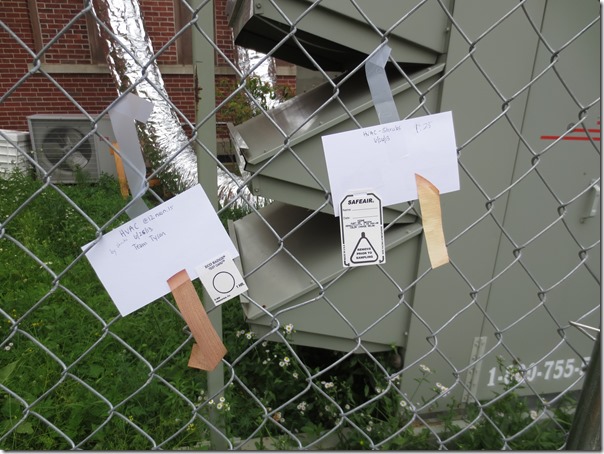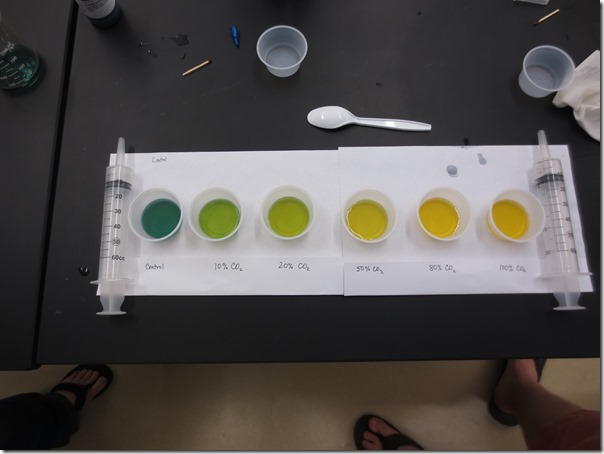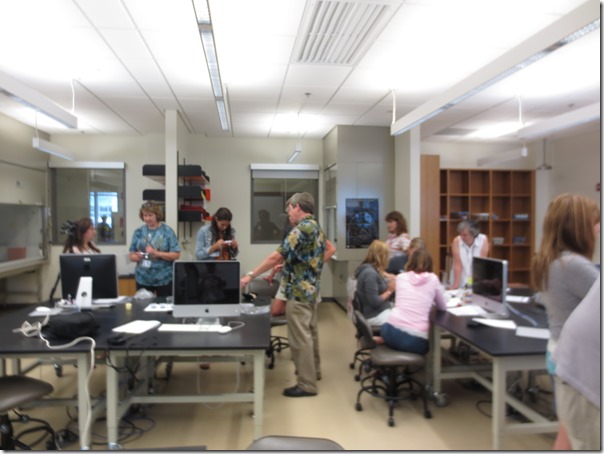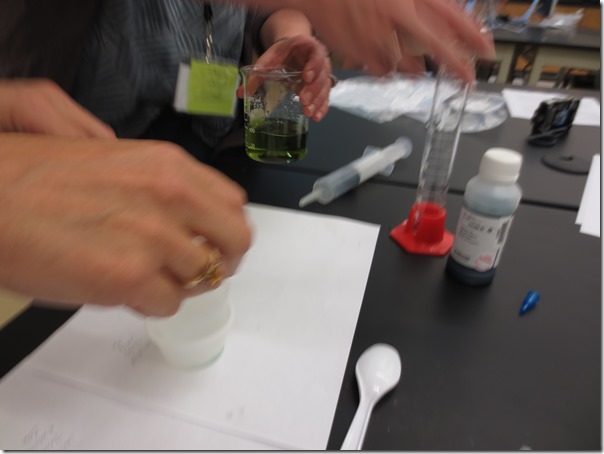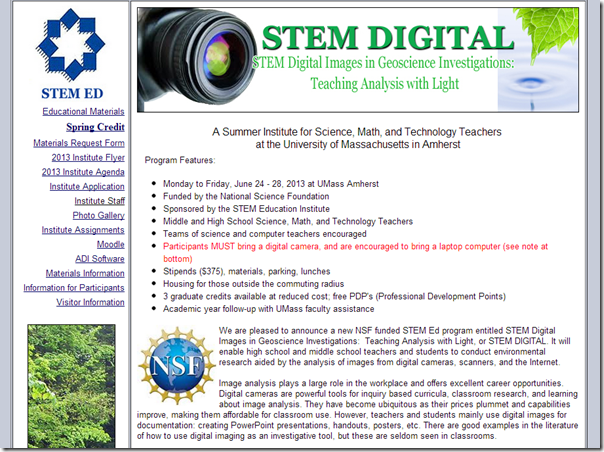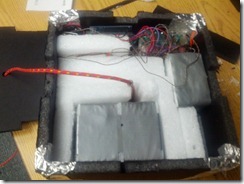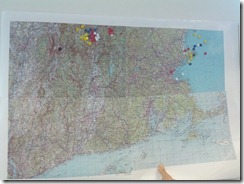Infrared image outside the Integrated Sciences Building at UMass Amherst
We started out the day by learning how to use Movie Tracker. Movie Tracker is much like the ADI software. Movie Tracker was really interesting to use, and would be particularly interesting for a physics classroom. We analyzed different items, including calculating acceleration due to gravity..
After learning movie tracker, we started a series of ozone experiments. We used homemade (called Shoeinbein Strips) and store bought ozone strips to test the amount of ozone found around locations of our choosing on campus. My group decided to test ozone around refrigeration and air conditioning units found near Worcester Dining Common on the UMass Amherst campus, varying time as well (1 hour versus 2 hours).
One of our test sites
Our test strips set up at UMass Amherst
Our results for the ozone experiments supported a claim that there would be no difference between ozone absorbed by shrubs and ozone absorbed by larger trees.
Results of our Ozone test
We spent the rest of the day playing in the infrared– using cheap webcams and home-made infrared googles.. Note- do not look at the sun or you will go blind.


